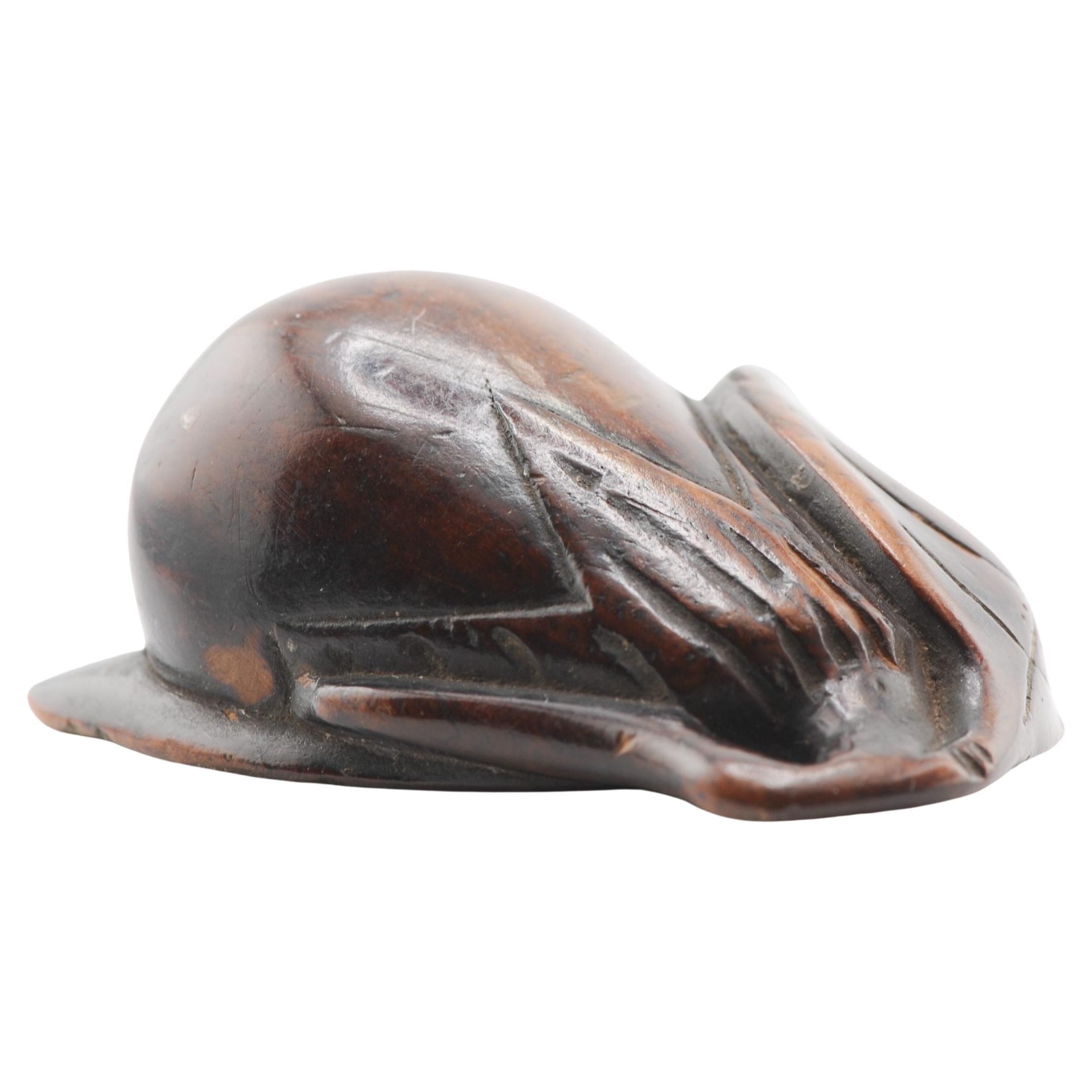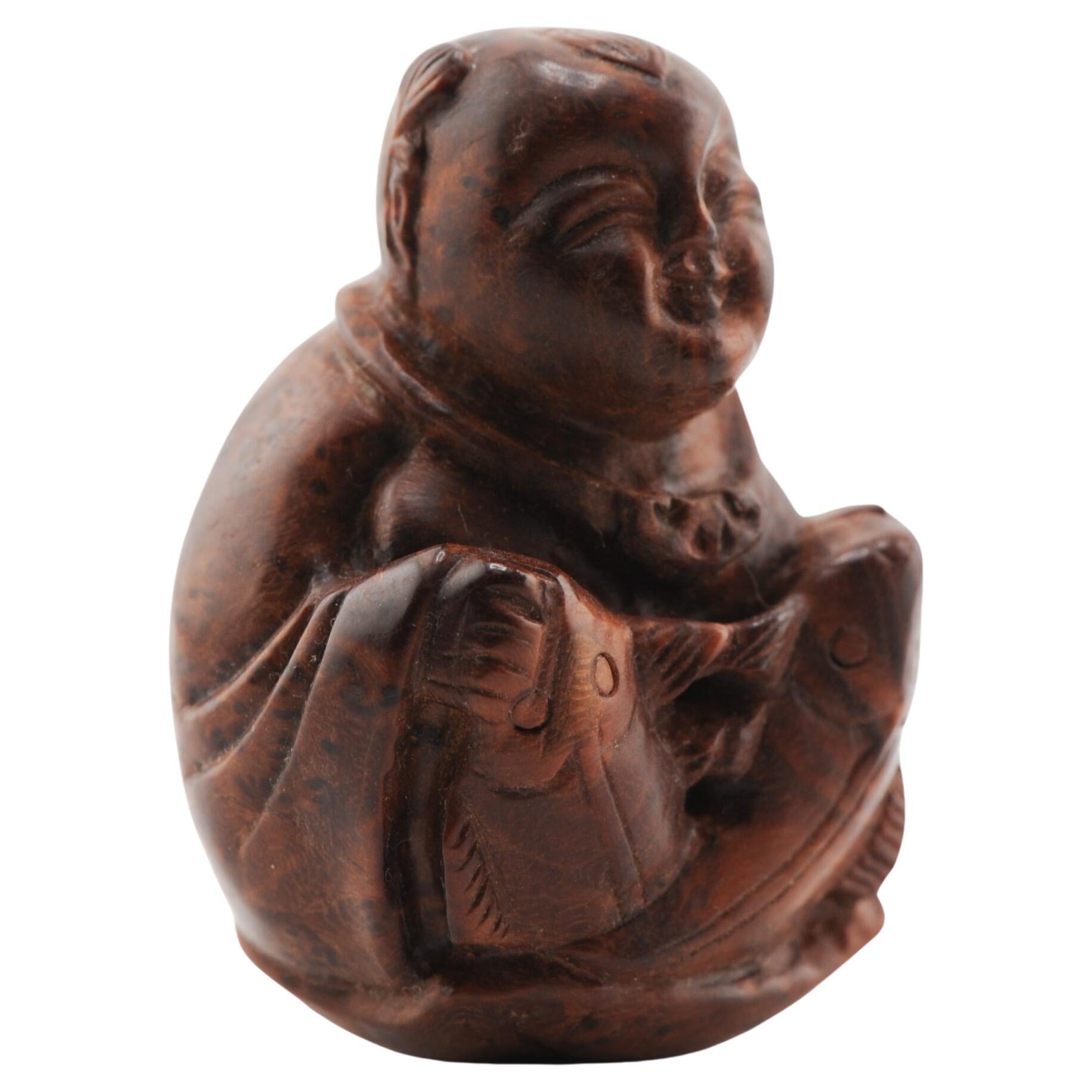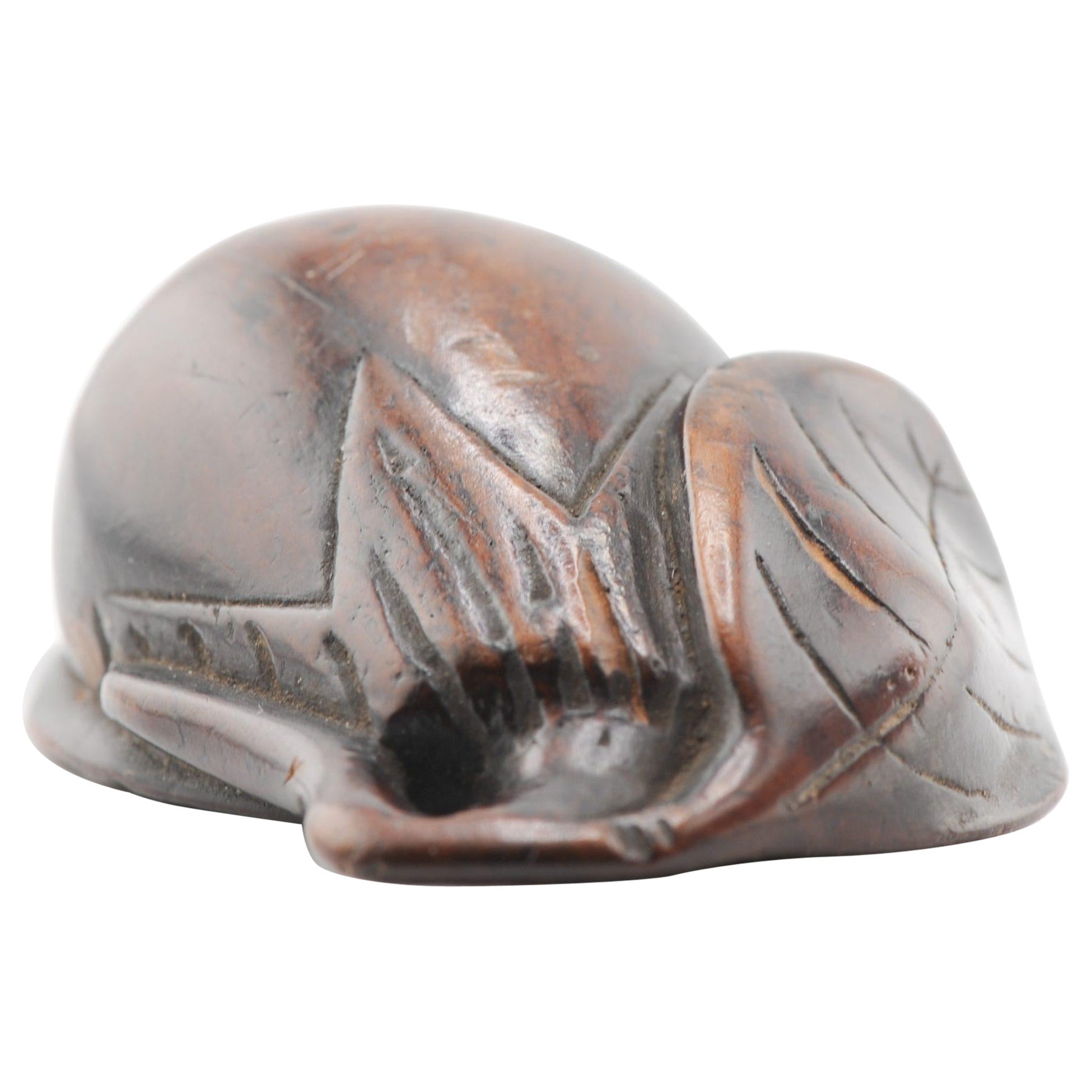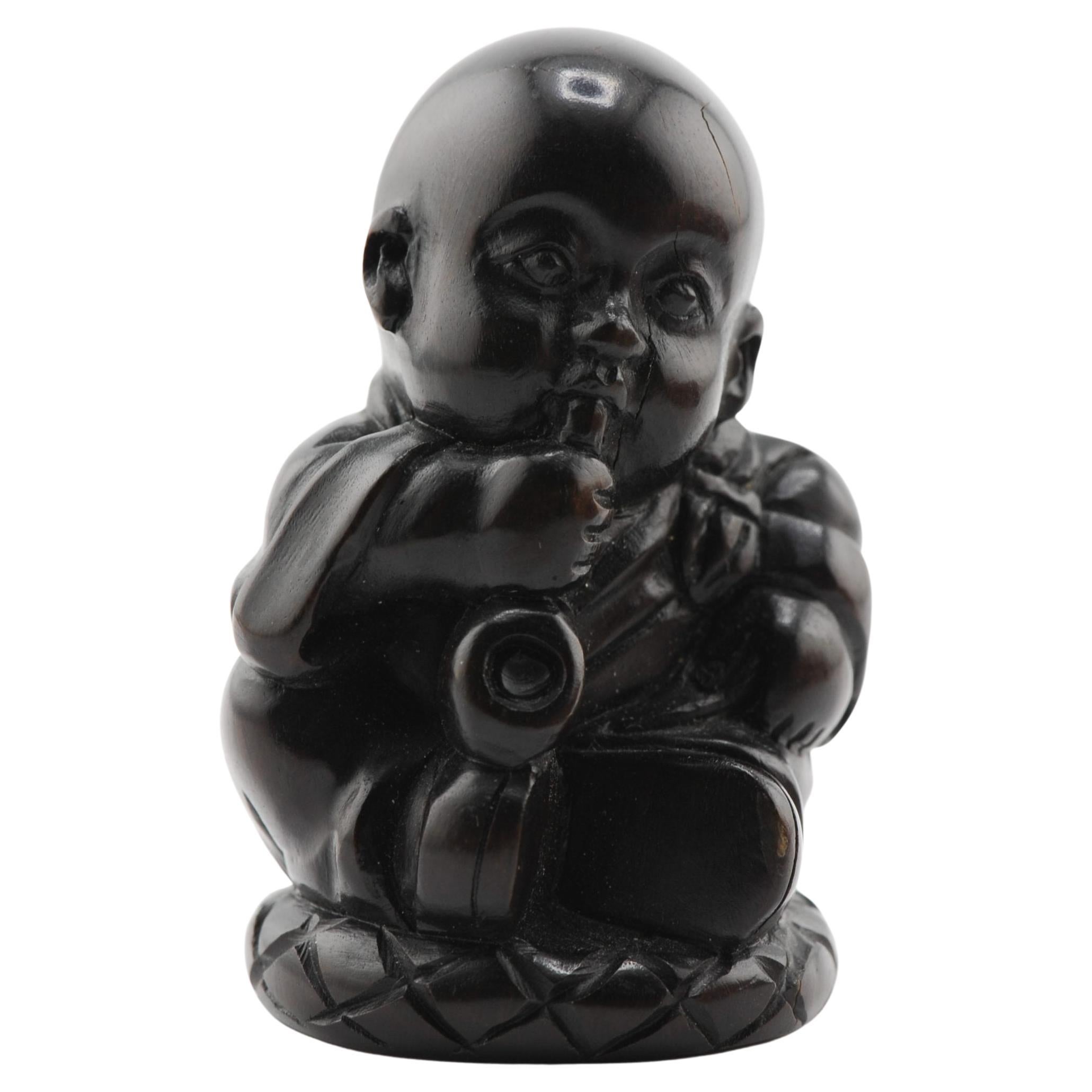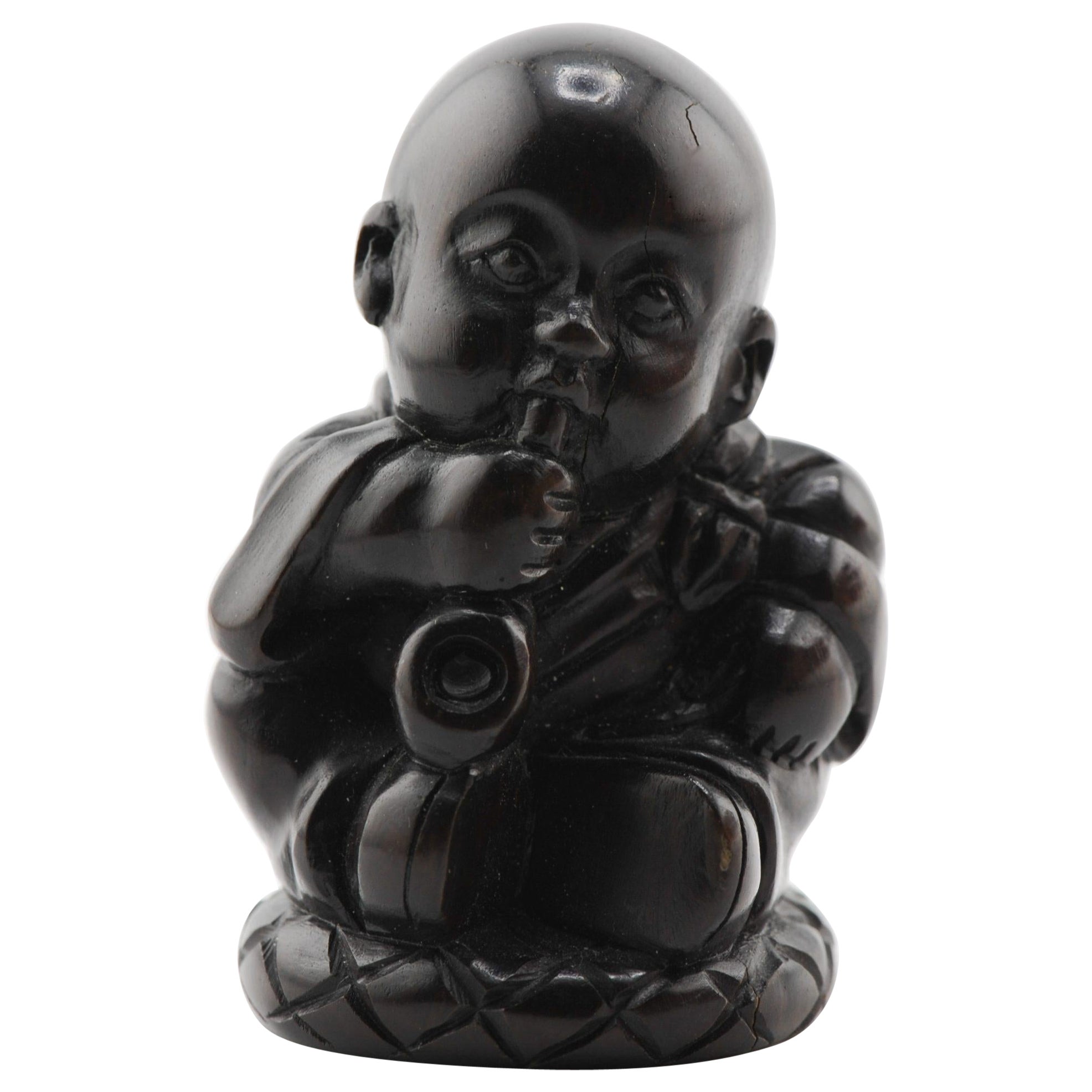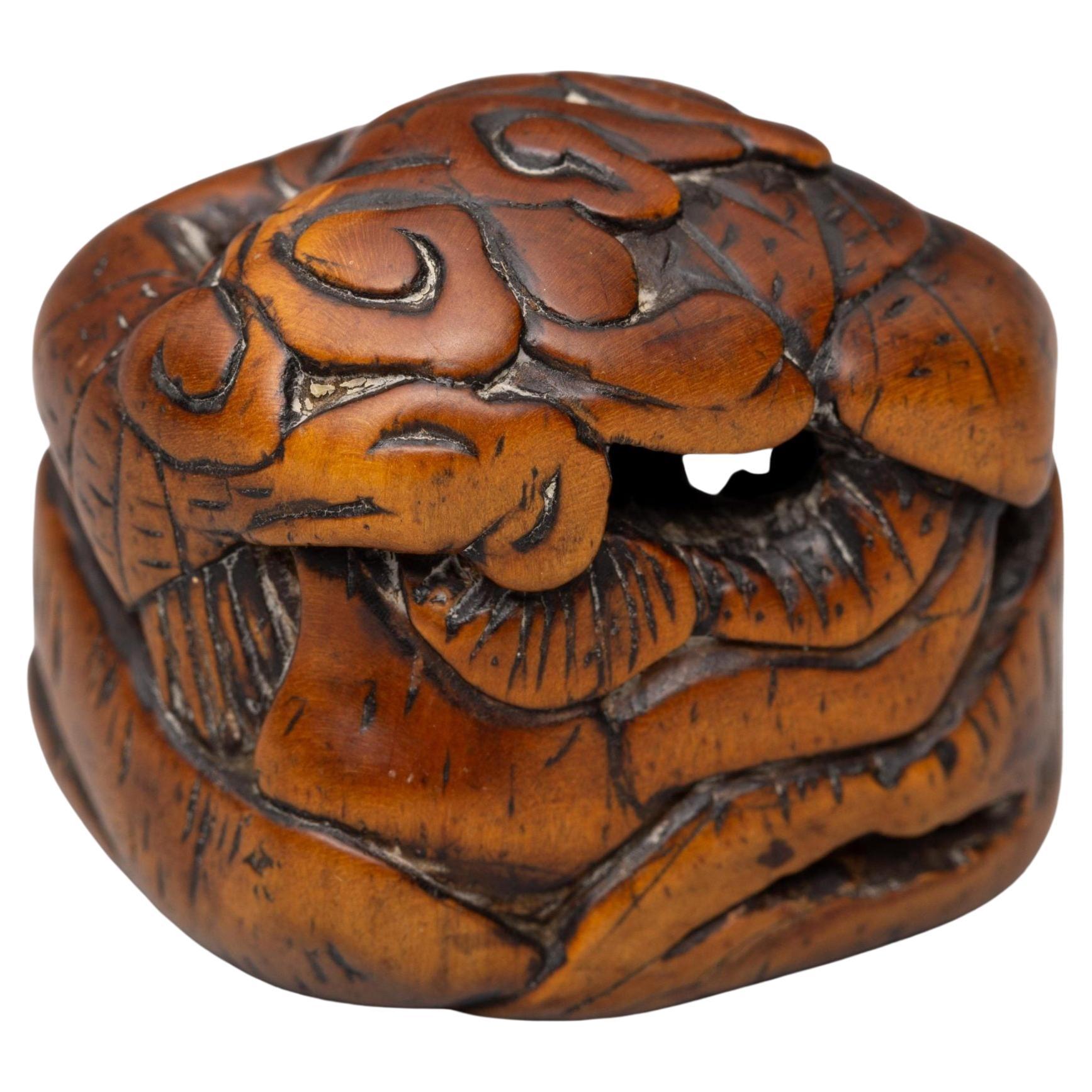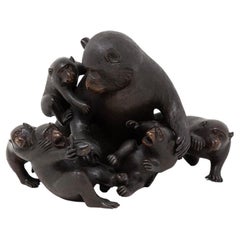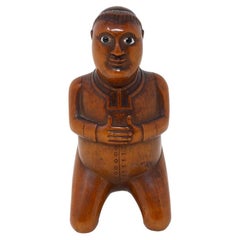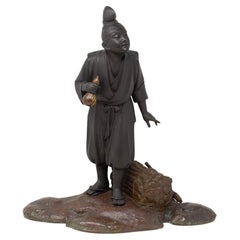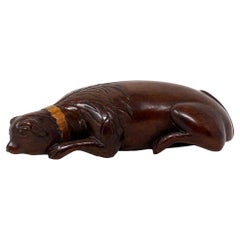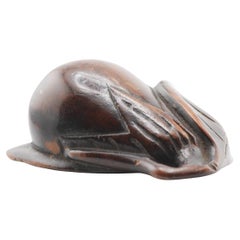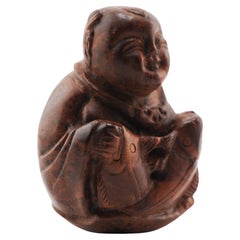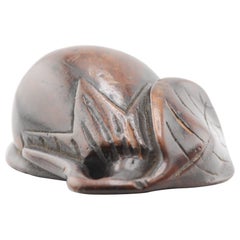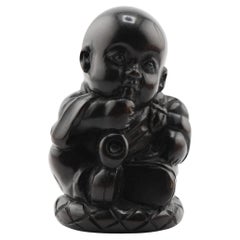Items Similar to Japanese Edo Period (1603-1868) Skeleton Foetus Netsuke
Want more images or videos?
Request additional images or videos from the seller
1 of 12
Japanese Edo Period (1603-1868) Skeleton Foetus Netsuke
$3,578.68
£2,600
€3,047.62
CA$4,885.58
A$5,435.01
CHF 2,849.10
MX$66,414.47
NOK 36,279.73
SEK 34,152.34
DKK 22,749.32
Shipping
Retrieving quote...The 1stDibs Promise:
Authenticity Guarantee,
Money-Back Guarantee,
24-Hour Cancellation
About the Item
Laying Foetus
From our Japanese collection, we are pleased to offer this Japanese Edo Period Skeleton Netsuke. The Skeleton Netsuke is carved from Boxwood depicting a skeleton in the foetal position. The Skeleton naturalistically carved in the foetal position ready for its transitional burial with a beautiful patination and highly detailed finish. The Skeleton Netsuke dates to the middle of the 19th century during the Japanese Edo period (1603-1868) circa 1840.
Netsuke (根付) is a miniature sculpture originating in 17th century Japan. Initially it began as a simply-carved button fastener on the cords of an inro which was later developed into ornately sculpted objects of craftsmanship.
Edo Period 江戸時代 (1603-1868) was the predecessor to the Meiji Period (1868-1912) and named after the city of Edo, now Tokyo where Tokugawa shogunate had its government. It was a time when Japan was under the rule of the Tokugawa family and was also known as the Tokugawa period. The Edo period consisted of a rule of 300 regional daimyo and emerged from the turmoil of the Sengoku period and was characterised by the countries economic growth, with also came with a great arts and culture enterprise. The Edo period transformed Japan with its strict rules in society and today’s Japanese society stemmed from the Edo period. It was generally a time of peace and prosperity for Japan and ended with the Meiji Period where the arts and crafts was further continued.
Boxwood is found in Europe, Northwest Africa and Southwest Asia. It is a light cream that turns darker to brown when exposed to light. The trees are very small meaning it is suited to smaller projects.
- Dimensions:Height: 1.07 in (2.7 cm)Width: 2.56 in (6.5 cm)Depth: 1.19 in (3 cm)
- Style:Edo (Of the Period)
- Materials and Techniques:
- Place of Origin:
- Period:
- Date of Manufacture:Circa 1840
- Condition:Wear consistent with age and use.
- Seller Location:Newark, GB
- Reference Number:Seller: WTDD1stDibs: LU6971242115382
About the Seller
5.0
Gold Seller
Premium sellers maintaining a 4.3+ rating and 24-hour response times
Established in 2019
1stDibs seller since 2022
36 sales on 1stDibs
Typical response time: 3 hours
- ShippingRetrieving quote...Shipping from: Newark, United Kingdom
- Return Policy
Authenticity Guarantee
In the unlikely event there’s an issue with an item’s authenticity, contact us within 1 year for a full refund. DetailsMoney-Back Guarantee
If your item is not as described, is damaged in transit, or does not arrive, contact us within 7 days for a full refund. Details24-Hour Cancellation
You have a 24-hour grace period in which to reconsider your purchase, with no questions asked.Vetted Professional Sellers
Our world-class sellers must adhere to strict standards for service and quality, maintaining the integrity of our listings.Price-Match Guarantee
If you find that a seller listed the same item for a lower price elsewhere, we’ll match it.Trusted Global Delivery
Our best-in-class carrier network provides specialized shipping options worldwide, including custom delivery.More From This Seller
View AllJapanese Meiji Period Bronze Monkey Group Sculpture Okimono Shosai
Located in Newark, England
Featuring Seven Japanese Macaques
Form our Japanese collection, we are delighted to offer this Japanese Bronze Monkey Group by Shosai. The Japanese Bronze Group displaying a male father monkey and his infants playing around and being mischievous with Persimmon fruit. The monkeys modelled as Japanese macaque monkeys (snow monkey). The bronze okimono is beautifully patinated with a highly lifelike and naturalistic casting signed to the underside Shosai 正齊鋳. The Bronze group dates to the Meiji Period (1868-1912) circa 1885.
Japanese macaque (snow monkey) is a terrestrial Old World monkey species that is native to Japan. They are known as snow monkeys because some live in areas where snow covers the ground for long periods each year hence their nickname. No other non-human primate lives further north or in a colder climate than the snow monkey. Individuals have brownish grey fur, pinkish-red faces, and short tails. Two subspecies are known and their conservation Status is of least concern. In Japan, the species is known as Nihonzaru ニホンザル, 日本 (Japan/Nihon) and saru 猿 (monkey) to distinguish it from other primates, but the Japanese macaque is the only species of monkey in Japan.
The Japanese macaque features heavily in the religion, folklore, and art of Japan, as well as in proverbs and idiomatic expressions in the Japanese language. They are often seen in paintings, block prints and represented in all manner of carvings from Okimono to netsuke. Many of these art forms reside in the world’s most famous museums and collections, some of the most prominent pieces by artists such as Mori Sosen and Kawanabe Kyosai. In Shinto belief (Japan’s indigenous religion/nature religion) legendary mythical beasts known as raiju sometimes appeared as monkeys and kept Raijin (the god of lightning/storms) company. In another well known tale the three wise monkeys who warn people to “see no evil, hear no evil and speak no evil” can be seen depicted in relief over the door of the famous Tosho-gu shrine in Nikko.
Meiji Period was an era of Japanese history that spanned from 1868 to 1912. It was the first half of the Empire of Japan, when the Japanese people began to build a paradigm of a modern, industrialised nation state and emergent great power, influenced by Western countries and aesthetics. As a result of radically different ideas, the changes to Japan were profound and it affected the social structure, politics, economy, military, and foreign relations across the board. The period corresponded to the reign of Emperor Meiji and was preceded by the Keio era and was succeeded by the Taisho era.
Cultural Art during the Meiji Period was of particular interest to the government and they overhauled the art export market which in turn promoted Japanese arts via various world’s fairs, beginning in Vienna at the world fair in 1873. The government heavily funded the fairs and took an active role organising how Japan’s culture was presented to the world including creating a semi-public company named Kiritsu Kosho Kaisha (First Industrial Manufacturing Company). The Kiritsu Kosho Kaisha was used to promote and commercialise exports of Japanese art and established the Hakurankai Jimukyoku (Exhibition Bureau) to maintain quality standards. For the 1876 Centennial International Exhibition in Philadelphia, the Japanese government created a Centennial Office and sent a special envoy to secure space for the 30,000 items that would be displayed. The Imperial Household also took an active interest in arts and crafts, commissioning works by select artists to be given as gifts for foreign dignitaries further emphasising the high quality and importance of Japanese art. Just before the end of the 19th century in 1890, the Teishitsu Gigeiin (Artist to the Imperial Household) system was created to recognise distinguished artists. These artists were selected for their exceptionally high quality wares and talent in their own industry. Over a period of 54 years Seventy artists were appointed, amongst these were ceramicist Makuzu Kozan and cloisonné enamel artist...
Category
Antique Late 19th Century Japanese Meiji Sculptures and Carvings
Materials
Bronze
Antique French Coquilla Nut Kneeling Monk Snuff Box
Located in Newark, England
PRAYING MONK SNUFF BOX
From our Collectables Category, we are delighted to offer this Antique Coquilla Nut Monk Snuff Box. The Snuff Box of beautiful patination carved from Coquilla...
Category
Antique 1810s French Tobacco Accessories
Materials
Glass, Nutwood
Japanese Bronze Okimono Sculpture by Yamamoto Kozan
Located in Newark, England
YOUNG MAN WOOD CUTTING
From our Japanese collection, we are pleased to offer this Japanese Bronze Okimono by Yamamoto Kozan. The Japanese Bronze Sculpture cast in Bronze with a natu...
Category
Early 20th Century Japanese Meiji Sculptures and Carvings
Materials
Bronze
Antique English Georgian Treen Dog Snuff Box 18th Century
Located in Newark, England
From our collectables, we are delighted to offer this Georgian Treen Dog Snuff Box. The Treen Snuff Box beautifully formed in the shape of a naive dog ...
Category
Antique Late 18th Century English George III Tobacco Accessories
Materials
Wood
Japanese Meiji Period (1868-1912) Satsuma Kogo Incense Box by Taizan Yohei
By Taizan Yohei IX
Located in Newark, England
DEPICTING BISHAMON ONE OF THE SEVEN LUCKY GODS
From our Japanese Satsuma collection, we are delighted to offer this Japanese Satsuma Kogo by Taizan. The Satsuma Kogo of petit circul...
Category
Antique Early 1900s Japanese Meiji Ceramics
Materials
Ceramic, Earthenware, Pottery
Japanese Meiji Period Bronze Group Bear & Alligator by Yoshimitsu
Located in Newark, England
The Japanese group comprises of a Bear being attacked by a large alligator. The alligator jumping on the back of the Bear with mouth wide opening showing its razor sharp teeth. The b...
Category
Antique Late 19th Century Japanese Meiji Animal Sculptures
Materials
Bronze
You May Also Like
Old Wooden Netsuke 19/20th C Japanese Japan Fruit Meiji Period
Located in Amsterdam, Noord Holland
Lovely and very detailed piece. Unsigned. Japan 19th or 20th century.
Weight: 15 grams
Provenance: Collected in the 1980's. From the collection of Clemens Merkelbach van Enkhuizen,...
Category
Antique 19th Century Japanese Meiji Ceramics
Materials
Metal, Bronze
$640 Sale Price
20% Off
Old Wooden Netsuke 19/20th C Japanese Japan Fisherman Meiji Period
Located in Amsterdam, Noord Holland
Lovely and very detailed piece. Unsigned. Japan 19th or 20th century. Visible is a fisherman with 2 fishes in his hand.
Weight: 19 grams
Provenance: Collected in the 1980's. From t...
Category
Antique 19th Century Japanese Meiji Ceramics
Materials
Metal, Bronze
$640 Sale Price
20% Off
Old Wooden Netsuke Japanese Fruit Figure Meiji Period, 19/20th Century
Located in Amsterdam, Noord Holland
Lovely and very detailed piece. Unsigned. Japan 19th or 20th century.
Weight: 15 grams
Provenance: Collected in the 1980’s. From the collection of Clemens Merkelbach van Enkhuize...
Category
20th Century Japanese Meiji Sculptures and Carvings
Materials
Wood
Old Wooden Netsuke 19/20th C Japanese Japan Figural Figure Meiji Period
Located in Amsterdam, Noord Holland
Lovely and very detailed piece. Unsigned. Japan 19th or 20th century.
Weight: 25 grams
Provenance: Collected in the 1980's. From the collection of Clemens Merkelbach van Enkhuizen,...
Category
Antique 19th Century Japanese Meiji Ceramics
Materials
Metal, Bronze
$640 Sale Price
20% Off
Old Wooden Netsuke Japanese Figural Figure Meiji Period, 19/20th Century
Located in Amsterdam, Noord Holland
Lovely and very detailed piece. Unsigned. Japan 19th or 20th century.
Weight: 25 grams
Provenance: Collected in the 1980’s. From the collection of Clemens Merkelbach van Enkhuize...
Category
20th Century Japanese Meiji Figurative Sculptures
Materials
Wood
Antique Edo Netsuke 18/19th C Japanese Japan Ikkosai 'Different world in a cave'
Located in Amsterdam, Noord Holland
Lovely and very detailed piece. Signed Ikkosai - Different world in a cave. It looks like a cave in a human brain. Very interesting
Provenance: Collected in the 1980's. From the col...
Category
Antique 19th Century Japanese Edo Ceramics
Materials
Metal, Bronze
More Ways To Browse
European Wood Carvings
Africa Carving
Wood Skeleton Skeleton
Antique Fasteners
Small African Sculpture
Netsukes
Japanese Netsuke
19th Century Japanese Wood Carving
Meiji Wood Sculpture
Edo Period Carved Wood
Antique African Carvings
African Carved Art 19th Century
Carved Netsuke
Japanese Inro
Wood Netsuke
Antique Inro
Antique Japanese Inro
Northwest Carving
